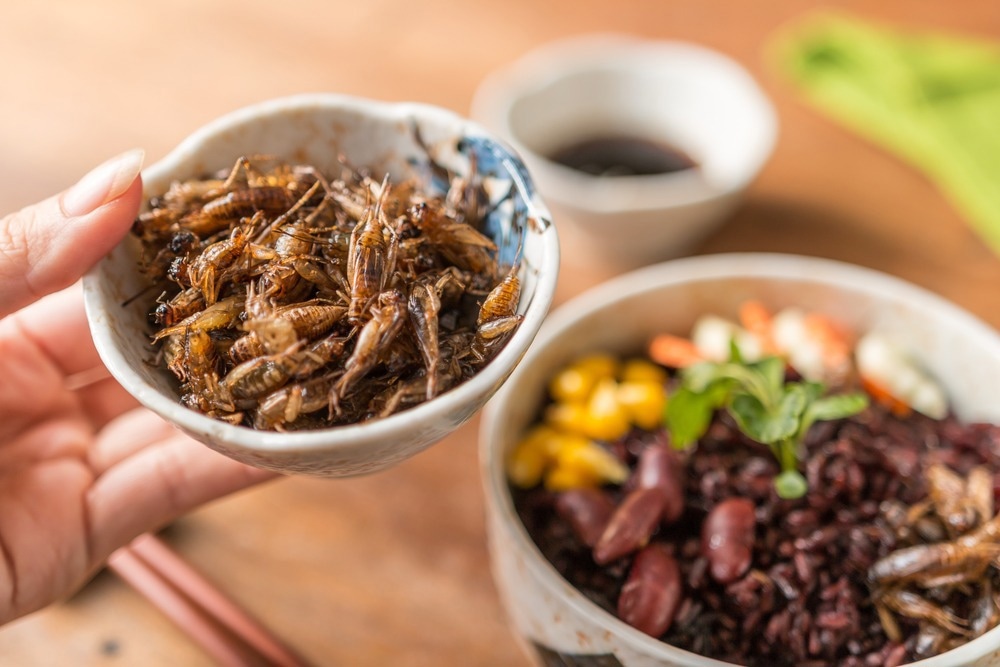A recent study on the acceptance of insect food products published in Food and Quality Preference found that certain types of insect products were better liked by Danish children.
 Study: Acceptance of Insect Foods Among Danish Children: Effects of Information Provision, Food Neophobia, Disgust Sensitivity, and Species on Willingness to Try. Image Credit: Charoen Krung Photography/Shutterstock
Study: Acceptance of Insect Foods Among Danish Children: Effects of Information Provision, Food Neophobia, Disgust Sensitivity, and Species on Willingness to Try. Image Credit: Charoen Krung Photography/Shutterstock
Background
The rising demand for animal protein has shifted the focus to alternative sources of proteins other than conventional animal meat. Insects have been used as a source of nutrition since ancient times. Edible insects are good protein sources and serve as an alternative to conventional meat. Disgust and neophobia are deemed major barriers to the adoption of newer foods.
Factors influencing acceptance of insect foods include willingness to eat, food neophobia, disgust, sensitivity, past exposure, sensory properties of the food, and presentation of insect-based products. Disgust towards food can be related to pathogen-avoidance traits, culture-specific, or arbitrary. Perceived cultural inedibility is also a resilient barrier to the acceptance of novel foods.
Insects are not deemed edible by the majority. Nevertheless, the rising debate on the unsustainability of conventional protein sources may provide a lee-way for introducing insect-based foods into Western diets. The benefits include environmental conservation and sustainability.
The study
This study was conducted on children and explored the effects of communicating three types of information: taste, health, and sustainability benefits of insect-based foods, on the willingness to eat insect foods.
The study also aimed to determine the relationship between food neophobia, disgust, and insect species properties on insect-food acceptance and to ascertain which insect-based food types were the most desirable. The study included 181 students in the age range of 9-13 years from Danish schools.
It entailed sending an online survey and lecture for students to teachers in advance. The survey had three parts – a pre-exposure questionnaire, during exposure, and a post-exposure questionnaire.
Results
Out of the 181 questionnaires submitted, 26 were disqualified. The participating students hailed from six Danish schools. Among the participants, 62 were introduced to the taste of the new foods, 71 were informed about the health benefits, and 48 underwent the sustainability intervention.
All except two participants were aware of insect-based foods; in fact, 49.7% had even tasted insects before. The majority showed moderate interest in trying insect-based foods before and after the intervention. Both these groups included boys and girls in identical proportions.
Effect of the interventions
Most participants expressed apprehension regarding crickets being used in food. For buffalo worms, the intervention groups showed differences regarding raising them as livestock. While the majority were either neutral (bordering towards negative) about using buffalo worm in foods.
Overall, the sustainability intervention seemed to render the highest scores for presenting buffalo worms as acceptable for livestock, while health intervention conferred the lowest score. However, the taste intervention did not cause a notable difference in opinion. Moreover, the mealworm was rated higher on both measures.
Effect of neophobia
Boys were found to be more neophilic compared to girls, according to the Food Neophobia Test Tool (FNTT). FNTT did not seem to vary amongst populations or the intervention groups; vis, children from different schools or grades. However, a strong negative correlation of FNTT scores with WTT was evident before and after the intervention.
Effect of disgust sensitivity
The Food Disgust Scale (FDS) of the participants indicated that the participants had higher disgust sensitivity. The FDS did not differ based on gender nor was there any variation among the intervention groups. Further, FDS did not correlate to WTT.
The correlation of FDS with FNTT was insignificant. The image of whole cricket received a lower hedonic rating than that of buffalo worm. Cookies received an above-neutral hedonic rating, whereas protein bars, crispbread, burgers, and chips made of cricket flour did not. Falafel received the lowest rating while whole cricket had the second-lowest rating.
Notably, 43 children were classified as neophilic; 89 were found to be neutral, and 47 were diagnosed as neophobic. The neophobic category had a significant effect on the hedonic response, which had lowed hedonic ratings than the neophilic segment.
Participants’ perceived appropriateness of insects as food ingredients – insects in cookies, received higher ratings, followed by chips and burgers with insects. These three categories were rated above neutral concerning appropriateness as foods. On the other hand, protein bars, falafel, crisp bread, and chocolate bar with insect ingredients were rated below neutral, with falafel garnering the lowest rating.
Conclusion
The findings provided consumer insights about edible insects among children. On average, Danish children were not apprehensive about trying insect-based foods. Furthermore, making children aware of the benefits of insect-based foods could increase their willingness to try them.